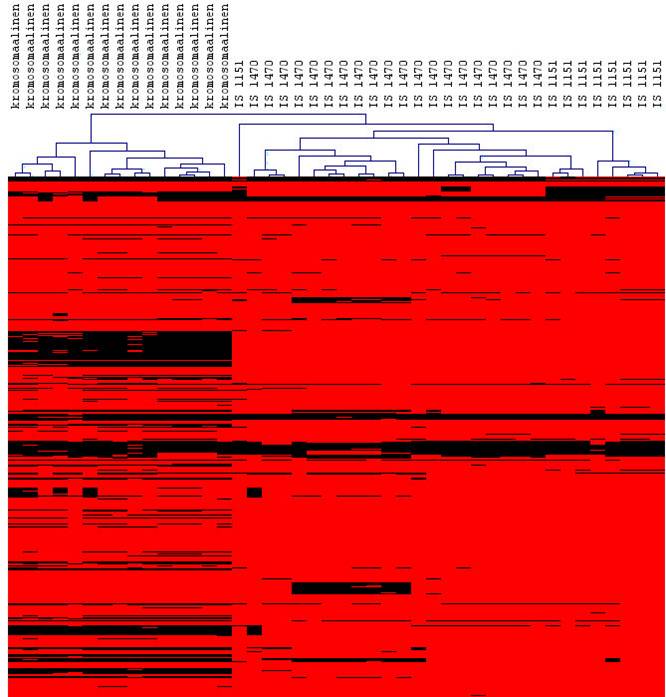A study by DVM Päivi Lahti and colleagues showed that chromosomal and plasmid-borne enterotoxin gene-carrying (cpe-positive) Clostridium perfringens strains have different epidemiology. The study conducted in Professor Hannu Korkeala’s research group was published in PLoS ONE journal.
PLoS One. 2012;7(10):e46162. doi: 10.1371/journal.pone.0046162. Epub 2012 Oct 19
Comparative Genomic Hybridization Analysis Shows Different Epidemiology of Chromosomal and Plasmid-Borne cpe-Carrying Clostridium perfringens Type A.
Lahti P, Lindström M, Somervuo P, Heikinheimo A, Korkeala H.
Department of Food Hygiene and Environmental Health, Faculty of Veterinary Medicine, University of Helsinki, Helsinki, Finland.
Until recently, only the chromosomal cpe-carrying strains were associated with food poisonings. However, Lahti et al. (2008) found also the plasmid-borne genotypes to be an important cause of food poisonings.
A comparative genomic hybridization (CGH) analysis with a DNA microarray based on three C. perfringens type A genomes was conducted to shed light on the epidemiology of C. perfringens food poisonings caused by plasmid-borne and chromosomal cpe-carrying strains by comparing chromosomal and plasmid-borne cpe-positive and cpe-negative C. perfringens isolates from human, animal, environmental, and food samples. The chromosomal and plasmid-borne cpe-positive C. perfringens genotypes formed two distinct clusters. Variable genes were involved with myo-inositol, ethanolamine and cellobiose metabolism, suggesting a new epidemiological model for C. perfringens food poisonings. The CGH results were complemented with growth studies, which demonstrated different myo-inositol, ethanolamine, and cellobiose metabolism between the chromosomal and plasmid-borne cpe-carrying strains. These findings support a ubiquitous occurrence of the plasmid-borne cpe-positive strains and their adaptation to the mammalian intestine, whereas the chromosomal cpe-positive strains appear to have a narrow niche in environments containing degrading plant material. Thus the epidemiology of the food poisonings caused by two populations appears different, the plasmid-borne cpe-positive strains probably contaminating foods via humans and the chromosomal strains being connected to plant material.
Additional information:
DVM Päivi Lahti
Department of Food Hygiene and Environmental Health
Faculty of Veterinary Medicine/University of Helsinki
paivi.lahti(at)helsinki.fi
